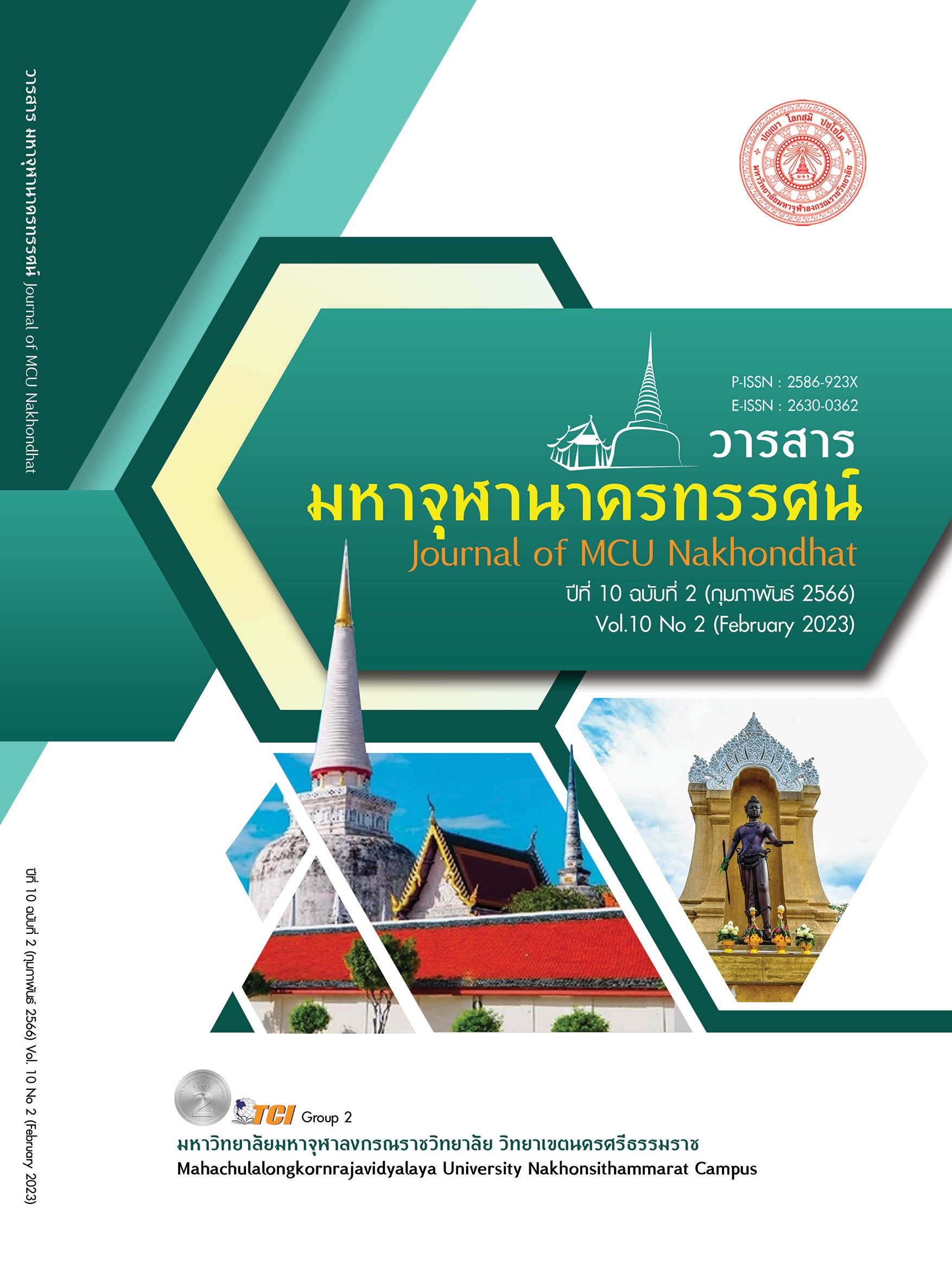DEVELOPMENT OF GUIDELINES FOR TUBE FEEDING IN CRITICALLY ILL PATIENTS AT RATCHABURI HOSPITAL BY THE METHOD OF MEASURING THE RESIDUAL VOLUME IN THE STOMACH (GASTRIC CONTENT)
Main Article Content
Abstract
This research and development study aimed to develop a guideline for tube feeding in critically ill patients at Ratchaburi Hospital by the method of measuring the residual volume in the stomach (Gastric content), and to examine an effectiveness of a guideline. The research design was employed in 6 phases, which were 1) assessing of the current situation; 2) developing a guideline for tube feeding; 3) Implement guideline and evaluate; 4) Improve a guideline; 5) A guideline was reused and evaluated and 6) confirming a guideline through connoisseurship. The quality-validated research instruments were test, skill assessment form, tube feeding guideline, satisfaction questionnaire, and surveillance record form. Data were collected using document review, focus group, observation, and test. Data were analyzed using frequency, percentage, pair t-test and content analysis. Results revealed that a guideline for tube feeding in critically ill patients at Ratchaburi Hospital by the method of measuring the residual volume in the stomach (Gastric content) composed of 6 aspects, which were 1) Situation 2) Assessment 3) Intervention 4) Prevention 5) Information record and 6) Nutrition. Nurses had significantly higher mean score of knowledge and tube feeding skills (p<0.05). Their mean score of satisfaction were 4.35 ( = 4.35, SD = 0.51). Patient’s relatives satisfied were 4.23 ( = 4.23, SD = 0.52). This guideline can used with patients who need to be properly feed through a tube according to nursing standard.
Article Details

This work is licensed under a Creative Commons Attribution-NonCommercial-NoDerivatives 4.0 International License.
References
จันทรา กุลแก้ว และคณะ. (2563). ผลของการสอนการใหอาหารทางสายยางโดยใช้สื่อวีดิทัศนต่อความรู้ และการปฏิบัติของญาติหรือผู้ดูแลโรงพยาบาลพิจิตร. วารสารวิจัยและวิชาการสาธารณสุขจังหวัดพิจิตร, 1(2), 25-30.
ณัฐตินา วิชัยดิษฐ และคณะ. (2561). การพัฒนาโปรแกรมส่งเสริมความสามารถของผู้ดูแลในการจัดการ ภาวะโภชนาการในผู้สูงอายุติดเตียงที่ใส่สายให้อาหารทางจมูก. วารสารสภาการพยาบาล, 33 (4), 109-123.
พัฒนา พรหมมณี. (2562). การวัดระดับทักษะในการดำเนินงานด้านการสาธารณสุข. วารสารวิชาการ มหาวิทยาลัยปทุมธานี, 11(1) , 284-293.
สมาคมผู้ให้อาหารทางหลอดเลือดดำและทางเดินอาหารแห่งประเทศไทย. (2561). คำแนะนำการดูแลทางโภชนาการในผู้ป่วยผู้ใหญ่ที่นอนโรงพยาบาล พ.ศ. 2561. ปรับปรุงครั้งที่ 1: มีนาคม พ.ศ. 2562. เรียกใช้เมื่อ 3 ตุลาคม 2565 จาก https://w1.med. cmu.ac.th/family/knowledge/for-doctor/guideline/3416
สุภา สุรเศรณีวงศ์ และคณะ. (2561). ประสิทธิผลการสอนแบบกลุ่มของผู้ดูแลในการวางแผนจำหน่ายผู้ป่วยที่ให้อาหารทางสายยางที่ใส่ผ่านรูจมูกที่บ้าน. วารสารพยาบาลสาธารณสุข, 32(2), 117-135.
อภิวรรณ อินทรีย์ และ ดลวิวัฒน์ แสนโสม. (2561). ผลของการใช้แนวปฏิบัติทางคลินิกในการให้สารอาหารในผู้ป่วยวิกฤตศัลยกรรมอุบัติเหตุ. วารสารวิทยาลัยพยาบาลบรมราชชนนี นครราชสีมา, 25(2), 118-137.
อรุณ จิรวัฒน์กุล. (2557). สถิติในงานวิจัย เลือกใช้อย่างไรให้เหมาะสม. กรุงเทพมหานคร: วิทยพัฒน์.
Bloom Benjamin S., et al. (1956). Taxonomy of Educational Objectives. New York: David Mckay Company.
Hanlon, C., Dowsett, J., & Smyth, N. (2015). Nutrition assessment of the intensive care unit patient. Topical clinical nutrition, 30(1), 47-70.
McClave SA, et al. (2005). Poorvalidity of residual volumes as a marker for risk of aspiration in critically ill patients. Journal of Crit Care Med, 33(2),324-30.
Montejo JC, et al. (2010). Gastricresidual Volume during enteral nutrition in ICU patients: the REGANE study Intensive. Journal of Crit Care Med, 36(8),86-93.
Poulard, F.,et al. (2010). Impact of not measuring residual gastric volume in mechanically ventilated patients receiving early enteral feeding A prospective before–after study. Journal of Parenteral and Enteral Nutrition, 34(2), 125-130.


